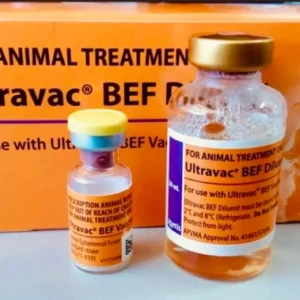Furosemide Injection
buy Furosemide Injection is a widely used veterinary diuretic. It helps remove excess fluid from the body by promoting the excretion of water, sodium, chloride, and other electrolytes through the urine. It is especially beneficial in managing conditions associated with fluid retention, such as heart failure, pulmonary edema, and certain kidney disorders.
Active Ingredient:
Furosemide, a loop diuretic, acts on the ascending limb of the loop of Henle in the kidney to inhibit sodium and chloride reabsorption.
Formulation:
Injectable solution, usually available in concentrations such as 10 mg/ml or 50 mg/ml.
Target Species:
Horses, cattle, dogs, cats, and sometimes exotic animals under veterinary care. Furosemide Injection
Indications
Edema Management:
Pulmonary edema (fluid in the lungs).
Edema caused by heart failure, liver disease, or kidney dysfunction.
Hypertension:
To lower blood pressure in animals with fluid retention-related hypertension.
Exercise-Induced Pulmonary Hemorrhage (EIPH) in Horses:
Commonly used in racehorses to prevent bleeding from the lungs during strenuous exercise.
Oliguria (Reduced Urine Output):
To stimulate urine production in animals with acute kidney injury.
Toxin Clearance:
May be used in poisoning cases to hasten excretion of toxins through increased urination.
Dosage and Administration for Furosemide Injection
General Dosage Guidelines:
Dogs and Cats: 2–4 mg/kg intravenously, intramuscularly, or subcutaneously, every 8–12 hours as needed.
Horses: 0.5–1 mg/kg intravenously or intramuscularly. For EIPH, administer 1–2 hours before performance.
Cattle: 0.5–1 mg/kg intravenously or intramuscularly.
Furosemide Injection Administration:
Administer slowly if given intravenously to prevent adverse reactions such as ototoxicity or cardiovascular collapse.
Dosage frequency and duration depend on the severity of the condition and the response to treatment.
Mechanism of Action
Furosemide blocks the reabsorption of sodium and chloride in the kidneys, leading to increased urine output.
It reduces fluid overload, alleviating symptoms of edema and congestion in tissues or lungs.
Benefits
Rapid Fluid Removal:
Quickly relieves symptoms of fluid overload, such as swelling and difficulty breathing.
Support for Heart and Kidney Function:
Decreases the workload on the heart and supports kidney filtration.
EIPH Management:
Improves respiratory performance in athletic horses by preventing lung bleeding.
Side Effects and Risks
Common Side Effects of Furosemide Injection:
Dehydration and electrolyte imbalances (low potassium, sodium, calcium).
Increased urination and thirst. buy Furosemide Injection
Serious Risks:
Ototoxicity (hearing loss) if administered too rapidly or at high doses.
Hypovolemia (low blood volume) or hypotension (low blood pressure).
Kidney dysfunction with prolonged use.
Drug Interactions:
May interact with other medications like aminoglycosides, nonsteroidal anti-inflammatory drugs (NSAIDs), or corticosteroids.
Precautions
Monitoring:
Monitor hydration status, electrolyte levels, and kidney function during treatment.
Adjust the dosage as necessary based on the animal’s response.
Contraindications:
buy Furosemide Injection
Should not be used in animals with anuria (no urine production) or severe dehydration.
Avoid in animals with hypersensitivity to furosemide or sulfonamides.
Pregnancy and Lactation:
Use cautiously in pregnant or lactating animals, as it may affect fetal or neonatal health.
Withdrawal Times for Food Animals
Milk: Generally, milk withdrawal times vary but are often 48–72 hours.
Meat: Typically, a withdrawal period of 2–5 days is required. Confirm specific guidelines in your region.
Legal and Ethical Considerations
Regulatory Status:
Furosemide is a prescription-only medication in most jurisdictions.
Competition Rules:
Many equestrian and racing authorities regulate or prohibit its use in competition due to potential performance-enhancing effects.
Furosemide Injection is an essential medication for managing fluid-related conditions in veterinary medicine. While effective, its use requires careful monitoring and professional oversight to avoid complications like dehydration and electrolyte imbalances. Always consult a veterinarian for appropriate dosage and administration tailored to the animal’s condition.





Reviews
There are no reviews yet.